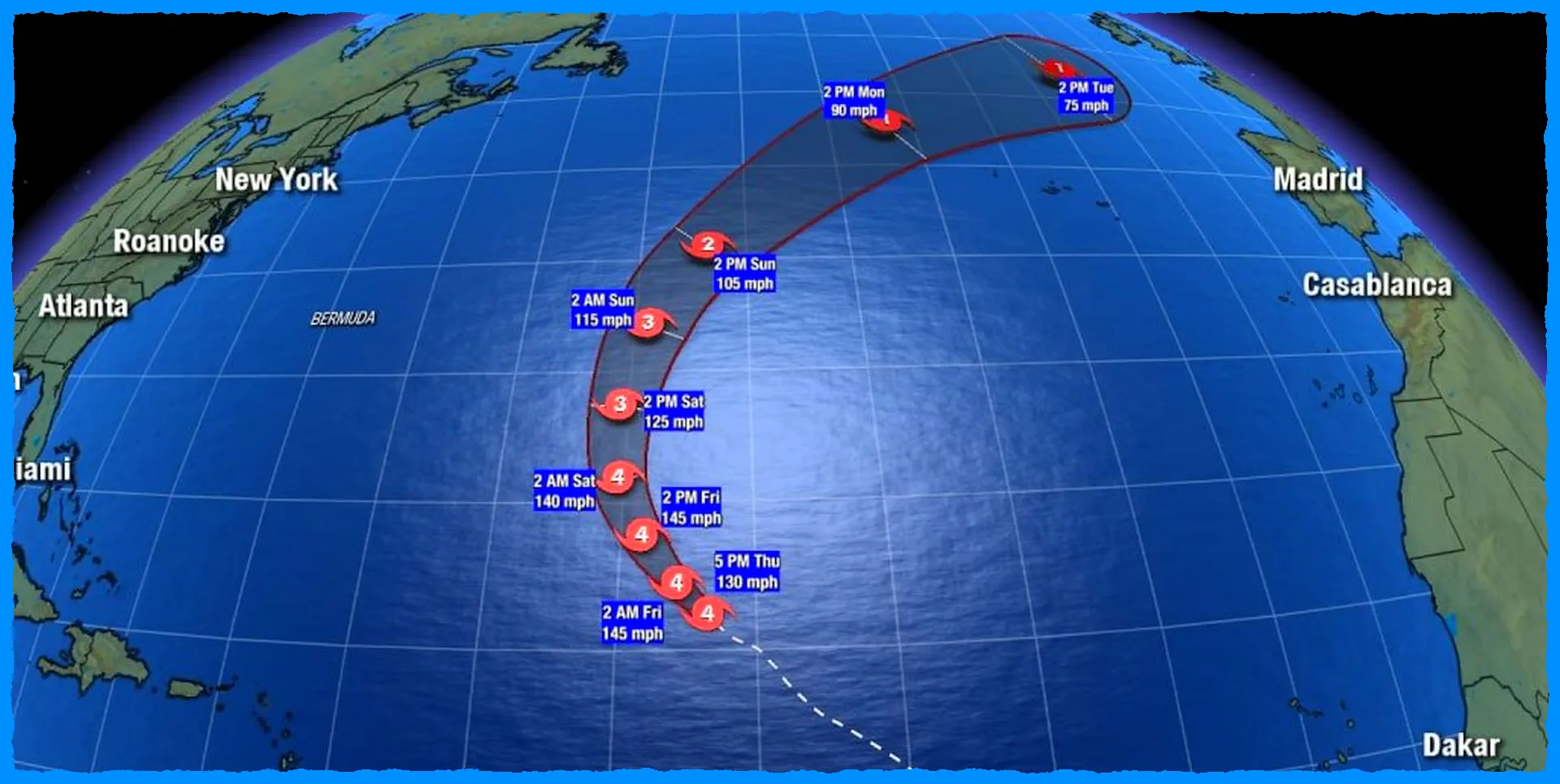
Swells generated by Category 4 Hurricane “Kirk” expected to reach the United States by Sunday
Category 4 Hurricane “Kirk” is expected to strengthen further in the coming day, generating swells that are expected to reach the east coast of the United States by Sunday, October 6, 2024.
Hurricane “Kirk” is currently strengthening over the central Atlantic Ocean, growing in size and producing ocean swells across the central and western Atlantic.
As of 21:00 UTC on October 3, Kirk's center was located about 1 745 km (1 085 miles) ENE of the Northern Leeward Islands and 2 665 km (1 655 miles) SW of the Azores. The hurricane's maximum sustained winds are now reaching 215 km/h (130 mph) and the central pressure is estimated at 948 hPa.
Kirk is moving northwest at a speed of 16 km/h (10 mph) and this general motion is expected to continue through early Friday, October 4.
Hurricane-force winds extend outward up to 297 km (185 miles) from the center.
Kirk became a hurricane on Tuesday, October 1, and rapidly intensified into a Category 3 system by October 3 when its wind speeds reached 193 km/h (120 mph).
The storm is expected to continue moving northwest through Friday, October 4, with further strengthening likely. Over the weekend, Kirk is forecast to turn north and then shift north-northeast, picking up speed as it moves toward Europe.
“Kirk is expected to grow in size and send out ocean swells across the central and western Atlantic,” NHC forecaster Kelly noted.
These swells will likely increase the risk of dangerous surf and rip currents along the Leeward Islands by Friday, Bermuda and the Greater Antilles by Saturday, and the U.S. East Coast and the Bahamas by Sunday.
These swells could produce life-threatening surf and rip current conditions.
Kirk is the 11th named storm of the 2024 Atlantic hurricane season, the 7th hurricane, and 3rd major hurricane.
It marks the farthest east in the tropical Atlantic that a storm has reached major hurricane strength this late in the calendar year on record.
“Of course, we had no satellite data in 1893, so where exactly the Great Charleston Hurricane of 1893 reached major hurricane intensity is somewhat uncertain,” CSU meteorologist Dr. Philip Klotzbach said.